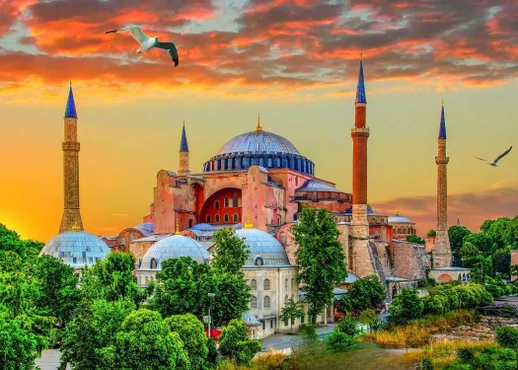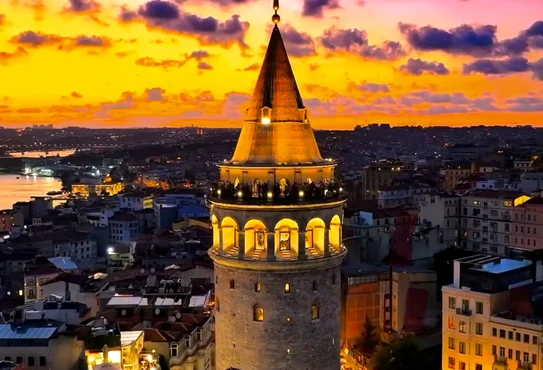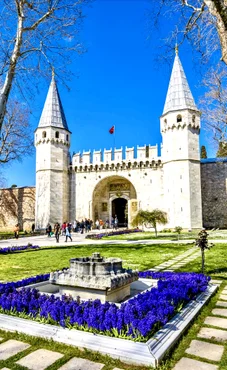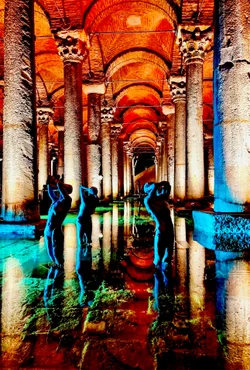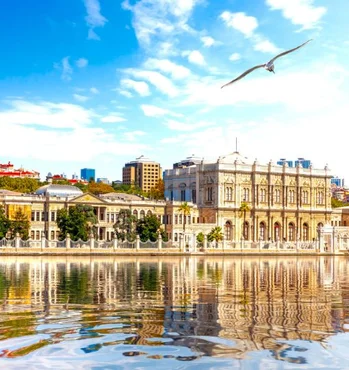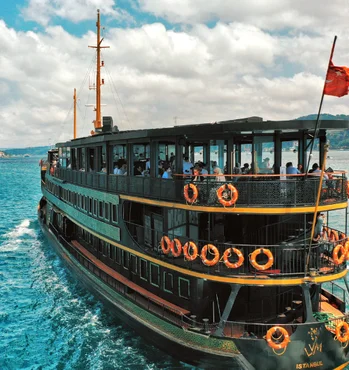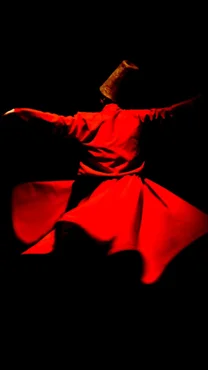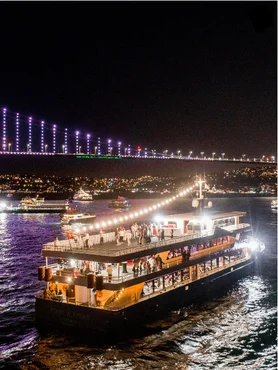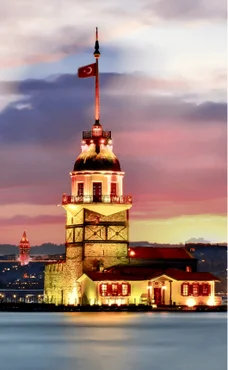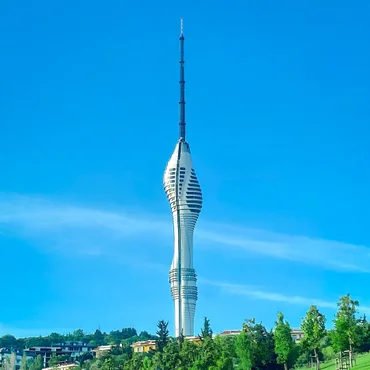The Turkish and Islamic Arts Museum Hosted Entry is available daily, except on Tuesdays, at 16:30.
About This Activity
Highlights
- Meet your host at Dsign Cafe and explore the museum with your audio guide
- Listen to the history of Turkish and Islamic Arts Museum from your exclusive audio guide
- See famous and important Artifacts in Turkish and Islamic Arts Museum
- Discover the Damascus Documents and Old Door of the Cizre Ulu Camii
- Amaze yourself with the amazing Carpets and Rugs Section
- Look closely at the Religious Relics and Wooden Relics
- Visit the 19th Century Ethnography Exhibition inside the museum
Includes
- Hosted Entry to the Islamic Arts Museum
- Professional Audio Guide in English
Turkish and Islamic Arts Museum
Visit the Turkish and Islamic Arts Museum and see the world's largest carpet collection including rare carpets from the Seljuk Empire, Iranian and Caucasian regions, collections of hand-written calligraphy, imperial edicts, ancient Qurans, and many other written works. Admire the collections of wooden, glass, ceramic, and stone articles by artists from former Islamic regions on display.
The museum was originally located in the soup kitchen of the Süleymaniye Mosque complex and later relocated to its current location in the İbrahim Paşa Palace, next to the Blue Mosque.
Make your reservation in advance and meet your host at Dsign Cafe 15 minutes before the tour begins. Your host will assist you with entry, and then you can enjoy exploring the museum at your own pace with the audio guide included in your Pass.
For this amazing experience and more, Buy Your Pass Now! Istanbul Tourist Pass® is here to make your Istanbul trip an unforgettable experience!
Times & Duration
Tour times: 16:30. Available every day except Tuesdays.
Meet your guide at Dsign Cafe at least 15 minutes before the tour. Look for a purple and fuchsia umbrella for easy recognition.
Where You'll Be
How to Get There?
Getting to the Turkish and Islamic Arts Museum Hosted Entry with Audio Guide is convenient and accessible from various parts of Istanbul. Here’s a guide to help you reach this iconic landmark:
The museum is in Sultan Ahmet Square, very close to the Blue Mosque, which is in the Fatih district of Istanbul. It is a very common place for both tourists and locals, so transportation is quite simple.
The most common method is using the Kabatas – Bagcilar tramway and getting off at the Sultanahmet station. From there, it is a 5-minute walk.
To get to the Kabatas – Bagcilar tramway from the Asian side, you can use the ferries to Eminonu from Kadikoy or Uskudar.
All About Turkish and Islamic Arts Museum
Turkish and Islamic Arts Museum is one of the most significant historical centers in all of Istanbul as it is the primary Turkish exhibition hall presenting many of the important examples of Turkish and Islamic art together. If you are keen on history, and/or doing an old city tour in Istanbul, don't miss this one and visit it during your time in Istanbul. To learn everything you need to know about the place, here are the history and some facts about the Turkish and Islamic Arts Museum.
History of Turkish and Islamic Arts Museum
The building the museum is in today was built back in the 15th or 16th century during the reign of Bayezid II. When exactly it was constructed is unknown, but it is known that it was given to Pargalı Ibrahim Pasha by Suleiman the Magnificent, who was his second grand vizier. The place was named Ibrahim Pasha Palace and following Ibrahim Pasha’s passing, the palace retained its name and became a government asset for the next 250 years. It was given to various government officials who were married into the royal family. Ibrahim Pasha Palace is the only private palace from the Ottomans that has survived until today except for some sultan palaces, so you can say the building that houses the Turkish and Islamic Arts Museum is a historical artifact in itself.
Originally, the Turkish and Islamic Arts Museum was opened to visitors in the Suleymaniye Mosque’s social complex in 1913. It received its current name after the restoration work to transform the Ibrahim Pasha Palace into a museum. These restorations started in 1966 and lasted until 1981. In 1983, it officially opened its doors to visitors as the Turkish and Islamic Arts Museum and has been open to this date.
Important Artifacts in Turkish and Islamic Arts Museum
There are many different sections in the Turkish and Islamic Arts Museum. Each section has enough artifacts to be a museum by itself with its many various artifacts. You should see all of them during your visit of the museum, but there are a couple of artifacts that stand out from the rest with their looks and/or their history.
Damascus Documents
Some of the earliest examples of Islamic Art, are important historical and religious documents. Various Qur’an parchments, documents about Damascus’ history, Qur’an roll manuscripts, and documents on different Islamic arts are some of the highlights.
Old Door of the Cizre Ulu Camii (Great Mosque)
Rescued from the Great Mosque in Cizre, this double-wing door is believed to have belonged to Artuqids. It is covered with bronze plates and has a wooden skeleton. Its ornaments are made from brass sticks and plaques. There are 3 medallions that symbolize infinity with a twelve-armed star in the center on each wing of the door. On the middle of both wings, you can see the door handles that have two dragons with a lion head on the middle. The epitaph that sits on top of the door is written in the Thuluth font.
Carpets and Rugs Section
One of the most striking sections is the carpets and rugs of varying sizes displayed in the huge saloons with display windows. Huge hand-woven Ottoman carpets are truly impressive and have unbelievable details. There are also carpets from Seljuk Turks displayed here, which are the only Seljuk carpets that survived until today. This collection is made of 13th to 20th-century Ottoman and Seljuk carpets is one of the world’s best collections of hand-woven carpets. With enough observation, you can tell the fantastic stylistic differences between Ottoman and Seljuk carpets and rugs.
Religious Relics
To see some of the rarest artifacts regarding Islamic history, visit the religious relics section in the Turkish and Islamic Arts Museum. There are many different religious manuscripts, Qur’ans, and epitaphs. This section also hosts the striking fragments of Prophet Muhammad’s beard and one of his footsteps, which draws a lot of Muslims from around the world.
Wooden Relics
If you wish to witness the wooden arts of the 9th- 10th century Anatolia, visit the wooden relics segment. There is a wide range of examples of wooden craftsmanship from Anatolian Seljuks, Period of Principalities, and Ottomans. There are wooden relics with inscriptions on them, different Qur'an parts, various Ottoman furniture like footstools and drawers, some examples of marquetry, and more.
19th Century Ethnography Exhibition
The museum’s ethnography part displays some of the important elements of 19th-century Istanbul such as traditional Ottoman clothes, Turkish baths, coffee houses, picnic areas, and Karagoz & Hacivat shows.
Know Before You Go
- This is a hosted entry tour. Your host will meet you at Dsign Cafe and help you enter. Then explore the museum with your audio guide.
- You need an Internet connection on your smartphone to get your audio guide.
- Children will be asked to present their valid passports at the entrance of the museums in order to validate their age.
- The museum is closed for visits for half a day on the first day of Ramadan and Sacrifice Festivals.
- You can buy your online ticket separately from the Istanbul Tourist Pass®.

.jpg)
.jpg)
.jpg)
.jpg)
.jpg)
.jpg)

.jpg)

.jpg)




.jpg)
.jpg)
.jpg)


